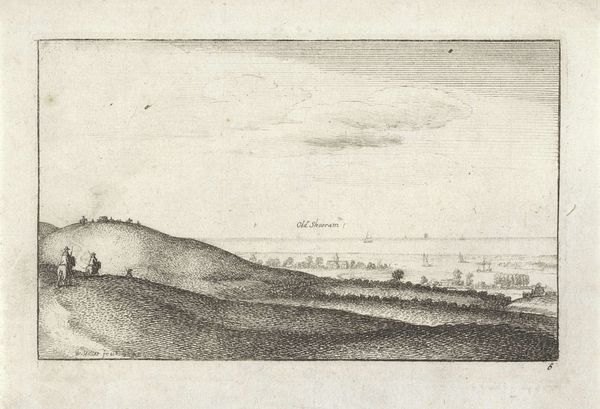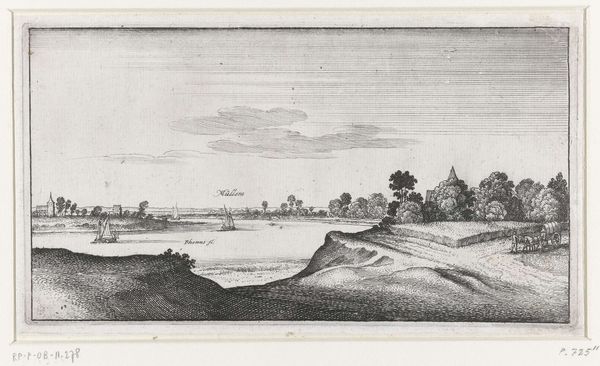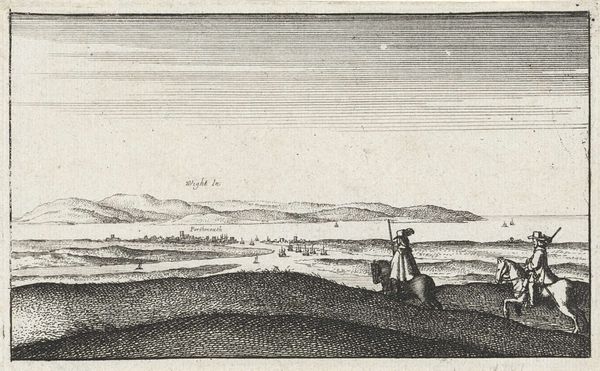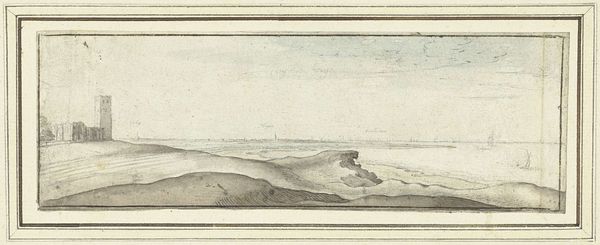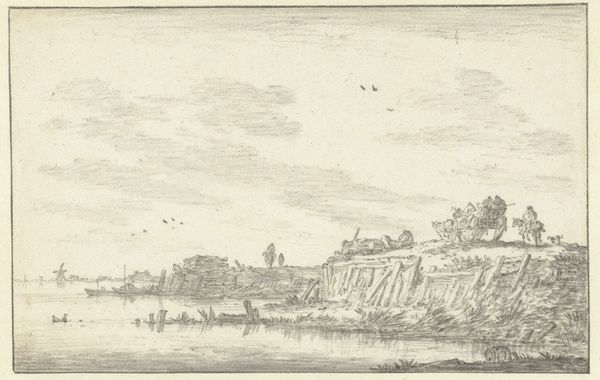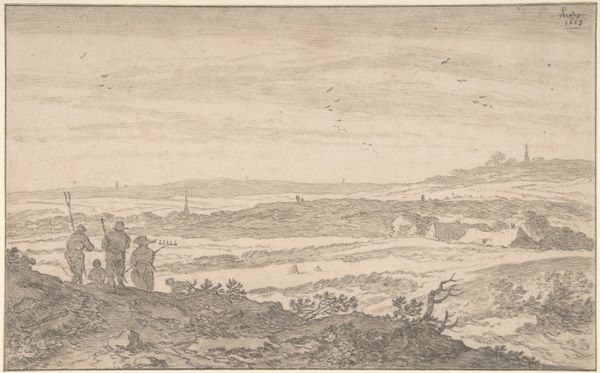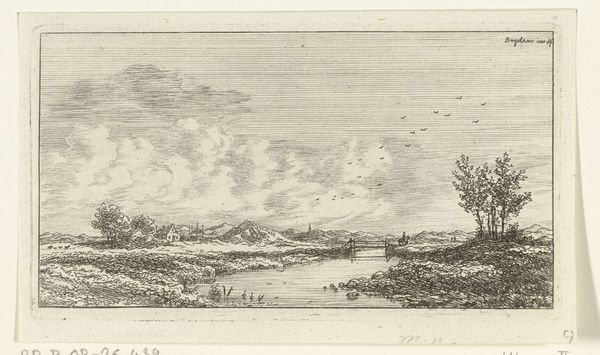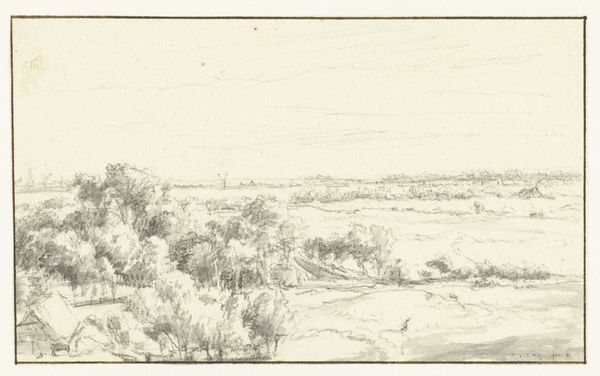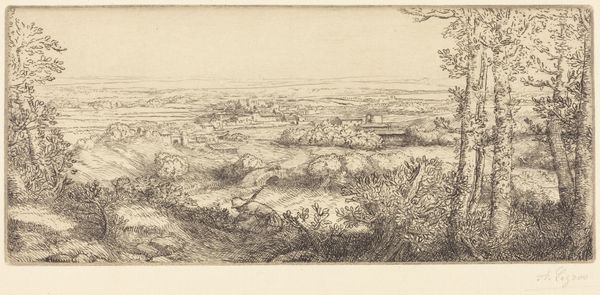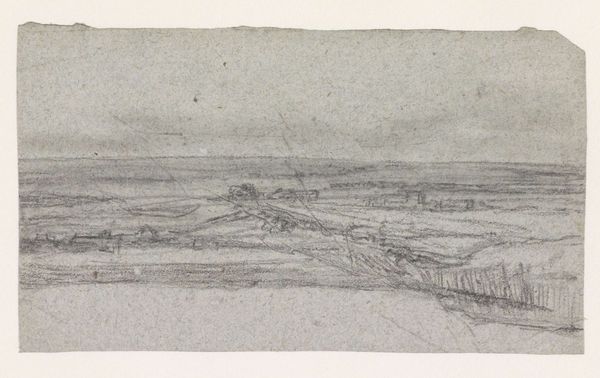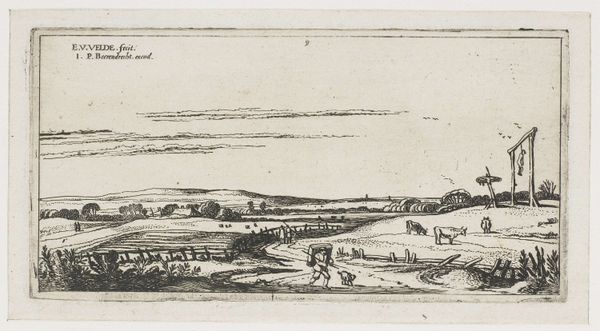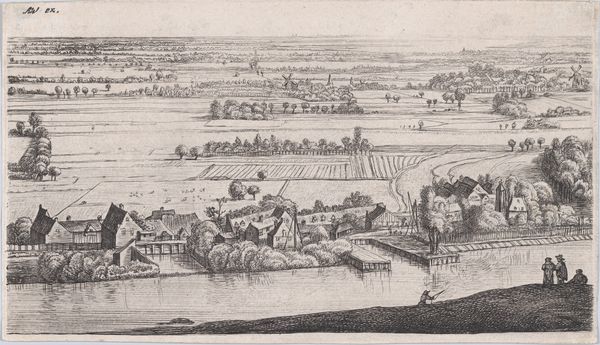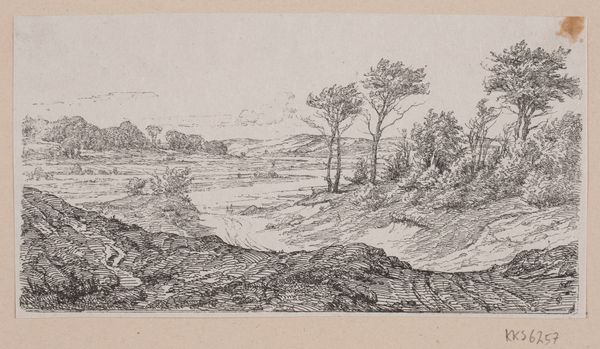
print, etching
#
dutch-golden-age
# print
#
etching
#
landscape
#
cityscape
Dimensions: height 44 mm, width 118 mm
Copyright: Rijks Museum: Open Domain
This delicate, panoramic view of the Zuiderzee, with Amsterdam, Weesp and Muiden in the distance, was made by Wenceslaus Hollar using etching, a printmaking technique, in the 17th century. To create an etching, the artist first coats a metal plate with a waxy, acid-resistant substance. He then draws through this coating with a sharp needle, exposing the metal. When the plate is immersed in acid, the drawn lines are ‘bitten’ into the metal. The longer the plate is exposed to the acid, the deeper the lines will be. Finally, the plate is inked and printed onto paper. The fine, precise lines of Hollar's etching perfectly capture the vastness of the landscape and the intricate details of the ships and buildings. But the print also speaks to the growth of Dutch trade and maritime power in the 17th century, etched into metal using corrosive acid and manpower, demonstrating that even in a seemingly straightforward landscape, the intersection of material, making and context can be revealed.
Comments
No comments
Be the first to comment and join the conversation on the ultimate creative platform.
